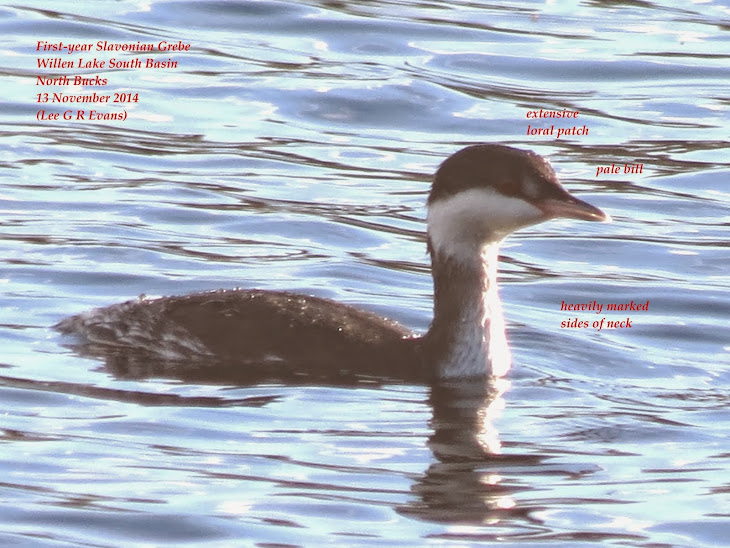SATURDAY 3 JULY
Well an eventful day. Following along the same lines as recent days, very warm and sunny again, with temperatures well in the high 70's. I had been hoping to see a Buff-breasted Sandpiper that had been present at Titchwell Marsh, North Norfolk, the evening before but by 0800 hours this morning, there had been no sign of it and it had presumably moved on overnight. Maybe it is last year's adult returning and will visit Cley Marsh in the next few days.
Anyway, disappointed at a no-show, I went down to Aldenham, where I bumped into an old sparring partner and author, Derek Turner. I was very pleased that he had managed to turn his life around and was now with a new partner - I had not seen him for several years and we once shared a lot of great times together, especially in very distant foreign climes in the late 1990's.
Then later, my fetish with the World Cup continued and I watched a very young and regimental Germany thrash one of the South American favourites Argentina 4-0. What an upset and following an earlier very exciting game that I had watched between Ghana and Uruquay (perhaps one of the games of the tournament) which ended in a penalty shoot-out. Presumably Germany will now go on to win, certainly if they play like they did today.
Robert Norris contacted me during the afternoon, so later I joined him in the evening at Olney Mill and at 2000 hours, we both enjoyed fabulous views of the adult female GOOSANDER and her three small young, fishing in the shallow water on the first bend, 100 yards east of the Mill. Rob photographed them, with one of his images published above. She originally had six young when first seen. The young birds were dark brown above and gleaming white below, with richer rufous colouring around the head and a narrow white streak behind the base of the bill and a pale loral spot.
This represents only the second breeding record for the county and follows a sighting of a female on the River Ouse at Gayhurst accompanying 12 small young on 8 May 2007 (Nik Mynard).
Goosanders are a tree hole nesting species and females generally lay 8-14 cream-coloured eggs. Incubation is by the female alone and males usually drift away with the eggs hatching after 30-32 days. The babies jump from the hole and run quickly to the nearest water. Though they can dive immediately, they feed mainly on surface insects, changing to small fish only when they are about ten days old. The youngsters finally fledge at 60-70 days of age.
Again, non-naturalised Barnacle Geese were present (6 this evening, Rob had seen 11 earlier) (Lee G R Evans)
Well an eventful day. Following along the same lines as recent days, very warm and sunny again, with temperatures well in the high 70's. I had been hoping to see a Buff-breasted Sandpiper that had been present at Titchwell Marsh, North Norfolk, the evening before but by 0800 hours this morning, there had been no sign of it and it had presumably moved on overnight. Maybe it is last year's adult returning and will visit Cley Marsh in the next few days.
Anyway, disappointed at a no-show, I went down to Aldenham, where I bumped into an old sparring partner and author, Derek Turner. I was very pleased that he had managed to turn his life around and was now with a new partner - I had not seen him for several years and we once shared a lot of great times together, especially in very distant foreign climes in the late 1990's.
Then later, my fetish with the World Cup continued and I watched a very young and regimental Germany thrash one of the South American favourites Argentina 4-0. What an upset and following an earlier very exciting game that I had watched between Ghana and Uruquay (perhaps one of the games of the tournament) which ended in a penalty shoot-out. Presumably Germany will now go on to win, certainly if they play like they did today.
Robert Norris contacted me during the afternoon, so later I joined him in the evening at Olney Mill and at 2000 hours, we both enjoyed fabulous views of the adult female GOOSANDER and her three small young, fishing in the shallow water on the first bend, 100 yards east of the Mill. Rob photographed them, with one of his images published above. She originally had six young when first seen. The young birds were dark brown above and gleaming white below, with richer rufous colouring around the head and a narrow white streak behind the base of the bill and a pale loral spot.
This represents only the second breeding record for the county and follows a sighting of a female on the River Ouse at Gayhurst accompanying 12 small young on 8 May 2007 (Nik Mynard).
Goosanders are a tree hole nesting species and females generally lay 8-14 cream-coloured eggs. Incubation is by the female alone and males usually drift away with the eggs hatching after 30-32 days. The babies jump from the hole and run quickly to the nearest water. Though they can dive immediately, they feed mainly on surface insects, changing to small fish only when they are about ten days old. The youngsters finally fledge at 60-70 days of age.
Again, non-naturalised Barnacle Geese were present (6 this evening, Rob had seen 11 earlier) (Lee G R Evans)

